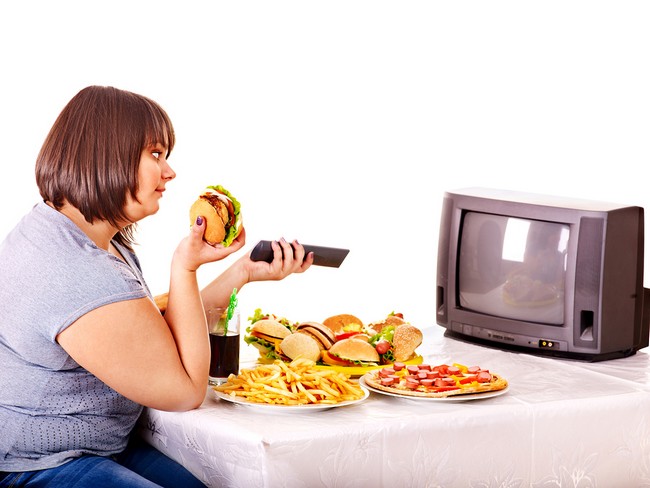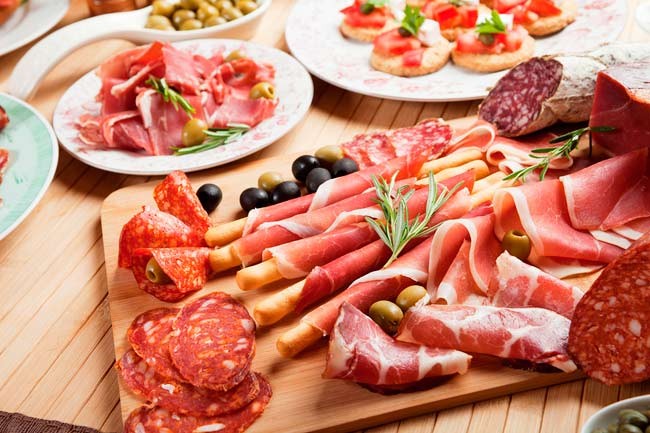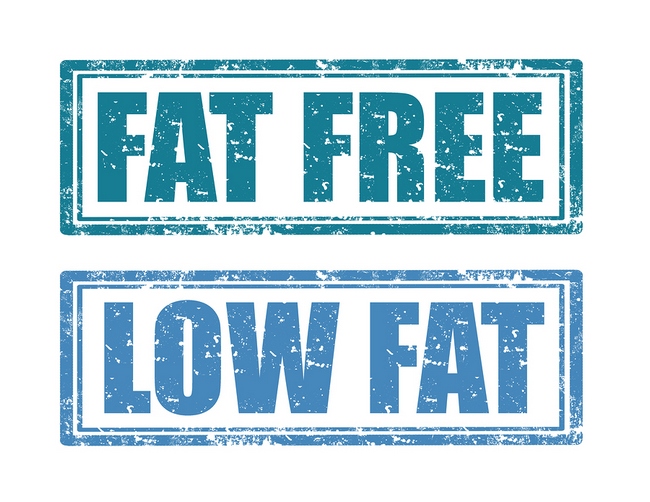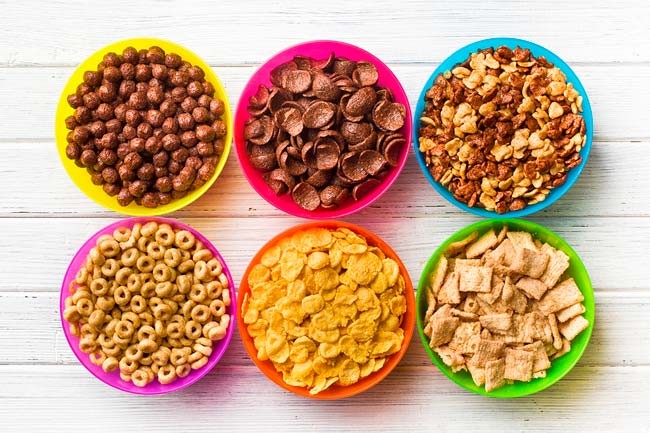- Make It Yourself Lavender Heart-Shaped Bath Bombs!
- 20 Things You Never Knew About “Down There”
- 12 Best Foods For Those Suffering From Arthritis Pain
- 12 Personal Hygiene Mistakes Almost Everyone Makes (Mom Never Told You About #4!)
- 15 Medicinal Plants And Herbs From The Cherokee People
- 12 Mind-Blowing Benefits Of Drinking Coconut Water During Pregnancy
- 12 Outstanding Winter Foods That Won’t Fatten You Up Like A Christmas Turkey
12 Foods You Think are Healthy but Are Making You Fat (You Won’t Believe #7)

Photo credit: bigstock.com
If you are like many Americans, you want to lose weight, but somehow it just doesn’t seem to happen. You exercise, you drink water, and you try to eat a diet that you think is healthy, but the weight just doesn’t seem to budge.
The truth is that most Americans eat a terrible diet. Don’t think that this is true? Think about this: if Americans were eating as healthy a diet as they think they are, then we would not have epidemics of heart disease, cancer, diabetes, and obesity.
The problem is that there is so much information and disinformation out there that it is hard to know what is true and what isn’t, what is fact and what is fiction, what is healthy and what isn’t.
Clever marketing also makes it difficult to determine whether or not something is healthy to eat. Many people believe that if a company is allowed to say that something is healthy on television, then those statements must have been checked out and verified. This would be great if it was true, but it isn’t. Manufacturers are allowed to say almost anything they like, and they can twist words to make their product sound like something it really isn’t. For example, “All Natural” sounds great, right? Keep in mind that arsenic is natural, friends, but that doesn’t mean that it’s something you would want to eat.
Want to know if any of the stuff in your pantry is secretly keeping you fat? Keep reading and find out the top 12 foods most people think are healthy or could help with weight loss, but are actually keeping that muffin top and spare tire stubbornly in place.
Continue to Page 2

Photo credit: bigstock.com
1. Processed Meats
The New England Journal of Medicine found that processed meat caused subjects to gain weight over a 4-year period of time. Of course, the fewer vegetables the subjects consumed, the more weight they gained, and that was no surprise, but researchers don’t really understand why this seems to be true. Processed meats are loaded with tons of carcinogens and other unhealthy additives, and if you saw the way hot dogs were made, you would never eat one again! Some speculate that the high amount of sugar in most processed meat is where the problem lies. No matter how you slice it, processed meats are bad news.
2. Diet Frozen Dinners
Some of the great things about these “diet” dinners are that the portions are already set out for you, and they are really convenient. The problem with these meals is that this is all you are getting: controlled portions and convenience. Frozen diet dinners are so highly processed that they have virtually all the nutrients removed from them. In order to make up for the lack of flavor from being low fat, manufacturers add tons of salt and sugar or artificial sweeteners to these foods to make them taste better. This causes you to gain water weight if nothing else. Also, most people find these meals unsatisfying, and within a few hours, they are looking for unhealthy snacks. Do yourself a favor and make yourself a satisfying meal out of real food.
3. Pasta
Believe it or not, most people think that pasta is healthy. It really isn’t. Yes, it is an alternative to meat, but there are better alternatives than pasta. Pasta is made from dough, which means that it has been highly processed. Yes, even whole wheat pasta. That makes pasta a simple carb, which your body will quickly turn into glucose or sugar. Imagine trying to diet and eating tons of sugar. That is exactly what you are doing when you eat a big meal of pasta. One of the biggest problems with pasta is serving size. A healthy serving is no more than ½ a cup. Most people find that they are eating 2 to 3 cups per meal. If you love pasta, no problem, just be sure that you measure out how much you are eating. You might want to start eating pasta as a side dish instead of the main meal so that you feel satisfied.
Continue to Page 3

Photo credit: bigstock.com
4. Low Fat Foods
Low fat processed foods are no better for you than junk foods. Many people justify their over-indulgence of these foods by telling themselves that it’s OK to have another one, or another handful, or to finish off the box because it’s low fat. The low fat craze has done more damage to the American people than plain old overeating ever could. Most people need to be on a no junk, no fast food, no sugar diet. That would end the obesity problem in this country within a few years. Food manufacturers add tons of sugar and salt to make these foods taste better. Don’t fall for this clever scam! Low fat does not mean low calorie and it certainly doesn’t mean healthy, diet, or natural.
5. Low Fat Yogurt
Very much like other low fat foods, low fat yogurt sounds good, but it won’t help you lose weight. These types of yogurt are highly processed and usually contain a ton of sugar. They might add some fruit to it to improve the flavor, which only adds to the sugar content. Low fat yogurt might be listed as “all natural,” but keep in mind that sugar and fruit are natural, but not something that will help you to lose weight.
6. Artificial Sweeteners
When the first artificial sweeteners came out, people rejoiced, thinking that this would allow them to endlessly indulge their sweet tooth without getting fat. Unfortunately, the exact opposite has been discovered to be true. Studies show that people who use artificial sweeteners tend to overindulge and crave ever more sugar. These types of synthetic sweeteners also wreak havoc on your gut bacteria. Studies conducted over the past 10 years have shown that artificial sweeteners stimulate your appetite, increase your cravings for carbs and sugar, and stimulate the body to store more fat. If you do nothing else on this list, remove all artificial sweeteners from your diet and see if the weight begins to come off.
Continue to Page 4

Photo credit: bigstock.com
7. Liquor
Most people don’t realize that alcohol is simply empty calories. Hard liquor, such as bourbon or whiskey, isn’t as bad a beer, but many people like fruity mixed drinks. Did you know that some of those drinks (depending on the size, of course) can contain as many as 300 calories? That is an awful lot of calories (mainly from the sugar and fruit) to consume without getting nutrition out of it. Also, when we drink to excess it lowers our inhibitions, so we eat more than we should. Keep in mind that wine (one glass) is your best choice, and beer should be your last choice. Limit your alcohol consumption to one or two drinks at most, and avoid pretty drinks with those cute little umbrellas.
8. Veggie Chips
Most people love potato chips, and they miss that salty crunch when they are trying to lose weight. The problem is, although veggie chips sound healthy, unless you make them yourself, they aren’t much better than potato chips. First, most of these veggie chips are made from a base of either potato or corn (GMO corn at that) flour. They add some vegetable paste from broccoli or sweet potatoes, bake or fry them, and then they add salt. The chips are just as fattening and no healthier than plain old potato chips. If you really love chips, make your own. Thinly slice some sweet potatoes, drizzle them with olive oil, a pinch of salt and pepper, then bake them on a cookie sheet at 400 degrees for 20 – 25 minutes, depending on how thickly you cut your potato. Leave the skin on for extra nutrition.
9. Diet Soda
This is one of the most common offenders. Just like artificial sweeteners, diet sodas sound like a good idea, but actually, they are bad news. Researchers have found that for every can of diet soda you consume, your risk for becoming overweight increases by as much as 41 percent! One study done at Purdue University found that diet sodas increase your risk of developing diabetes or heart disease, or having a stroke. The problem with diet sodas is that they confuse the body, throwing things out of kilter. Your body thinks it has consumed calories since you are drinking something sweet, but when it doesn’t get those calories, it doesn’t know how much you have actually eaten. This gives you cravings for more sweets. Scientists at the University of Texas Science Center found that the more diet soda a person drank, the more weight they gained over time.
Continue to Page 5

Photo credit: bigstock.com
10. Fructose
This is the kind of sugar that naturally occurs in fruit, and many people think that because it came from Mother Nature, it must be healthy, right? Well, this is true and it’s not exactly right at the same time. Eating one or two pieces of whole fruit each day is good for you, that much is true. The fructose in two pieces of fruit isn’t much and won’t harm you. The problem with fructose is a twofold one. Many overweight people turn to fruit and fruit juice to satisfy their sweet tooth. Fruit juice, even if you squeeze it yourself, often contains as much as 7 pieces of fruit. This is a high number of calories, and most of those calories come from sugar. Even if you eat the fruit whole, eating more than 3 pieces of fruit each day is too much fructose.
The second problem is that most processed foods and drinks use tons of fructose to “naturally” sweeten their products. In fact, the number one source of calorie consumption in the
US is high fructose corn syrup (usually in the form of soda). Keep your total fructose consumption to less than 25 grams each day.
11. Breakfast Cereals
Although cereal can be a healthy choice in the mornings, most of the cereal Americans eat is not much more than sugarcoated flour. Very few cereals are made with whole grain. Even if you should find one, you will probably find that it has added sugar, fructose, honey, chocolate bits, and pieces of sugarcoated fruit. Most cereals will spike your blood sugar, then your insulin levels, and when you have your sugar-crash about 10 or 11 AM, you will want to refill that sugar deficit by grabbing a few cookies and a soda. Cereals that say they have “low sugar” usually have misleading labels. Read the serving size. A typical serving is ¾ to 1 cup. Most of these “low sugar” cereals try to say that their serving size is ¼ cup, which is a very small handful of cereal. Opt for eggs or oatmeal as a healthy alternative.
SEE ALSO: Drinks You Think are Healthy but Are Not Any Better Than Sodas
12. Whole Wheat Bread
There is a big difference between whole grain bread and whole wheat bread. Although whole wheat bread sounds healthy (and they have all those beautiful sunny pictures of wheat fields on the package, right?), all the grains in this type of bread have been processed and pulverized into the type of flour that does nothing more than spike your blood sugar. Whole wheat bread has a high glycemic index, just as high as regular white bread, so you aren’t really doing yourself any favors by eating this type of bread. Whole grains are good for you and won’t spike your blood sugar levels, encouraging your body to make insulin and store this extra glucose as fat. Look for the words “whole grains” on the package.
Of course, in addition to ditching the foods that are keeping you fat, you will need to get regular exercise, at least 7 hours of sleep each night, and learn how to manage your stress if you really want to watch the weight simply drop off.
References:
































